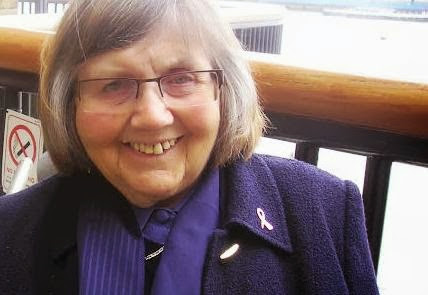My last blog was about subtle abuse that focused on people’s values and behaviour and the enormous difficulties in trying to make positive changes. Now, now I want to write about the abuse, sometimes subtle, and at other times not so subtle, that exists in the built environment. An accessible environment is important for everybody but the issues become much more complex when disabled people are trying to get about.
What disabled people fought for in improving environmental infrastructure in the 1980’s continues to need pressure both locally and nationally just to maintain the existing access. You may remember a time when campaigns by disabled people centred on public transport and there were people who applauded the efforts being made, and others who thought disabled people selfish. Most people, today, take for granted that they can access all forms of transport and the main issue is usually the cost of travelling.
The huge cost to disabled people, both physically and emotionally, and the gains that were made, are quickly deteriorating, being neglected or not being addressed at the design stage. Two major developments local to me, one a major health centre and the other a road improvement scheme, have both made headline news in the last few weeks because disabled people’s voices, knowledge, expertise and concerns have been ignored.
Professional people in the statutory authorities are finding the criticism hard to believe and feel that these new schemes are flagships in the local community. Both have fundamental flaws and it will now take huge additional resources to make the necessary changes and of course, some will be impossible to make as the schemes are far advanced.
In these and other instances non-disabled professional experts in their field chose not to engage with disabled people from the concept through to completion. There are many who cannot understand how disabled people can be expert in a particular field when they need ‘caring for’ and ‘protecting.’ For them, the two are a mismatch! This means disabled people continue to be abused by an environment that falls short of meeting their needs, and the needs of the public as a whole. Next time you leave home, check how many heavy glass doors you struggle to open, taps in public toilets that you cannot turn on, signage with print illegible or that has two small a font and with no pictures for those who cannot read or understand them
In the next blog I will write about what would improve the downturn in environmental access.
Ann Macfarlane
September 2013
Ann Macfarlane OBE

Subscribe to:
Posts (Atom)
About Ann MacfarlaneOBE
Ann became a trustee at the Social Care Institute for Excellence in 2007. Ann, a wheelchair user, is a leading Disability Rights and Equalities Consultant, focusing on health and social care as it affects disabled adults, irrespective of age. She specialises in Independent Living, Direct Payments and Personal Budgets, and has been involved in the UK disabled peoples' movement for many years. Ann is an 'expert by experience' for the Care Quality Commission, and works with the Department of Health, the NHS and other national Organisations. She is recognised in her community and is a member of the Local Authority's Safeguarding Board, chair of their Users Adults at Risk Group and the local Patient-Wide Forum. She is Patron of Kingston Centre for Independent Living. Ann has lectured worldwide on health and social care. Ann received her MBE in 1992, and an OBE in the Queen’s Birthday Honours in 2009. She was also awarded a Paul Harris Fellowship. Ann has particular responsibilities in her local United Reformed Church and enjoys photography, travel, art and gardens.
